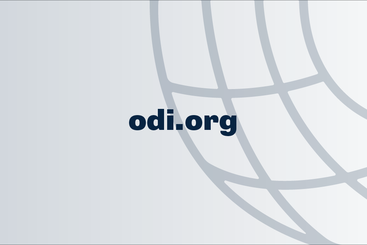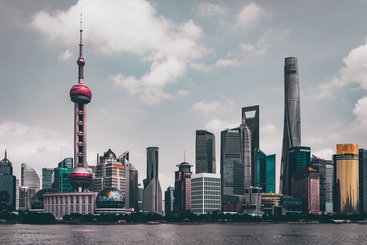Welcome to the April issue of our China and global development round-up. This month, I recommend articles that discuss how China’s role in infrastructure development and in the multilateral debt relief system is changing; China’s relation with development institutions; some fresh takes on the BRI; and finally, some interesting pieces that concern China’s domestic development.
China’s changing role in global infrastructure development
Read No. 1: China invests in African infrastructure: the case of Lekki Port in Nigeria
When we talk about Chinese infrastructure construction, many people confuse it with investment. In reality, up until recently, most Chinese infrastructure construction in Africa was financed through lending by Chinese policy banks to governments, not through investment by companies – but now we see some shifts in this trend.
Hong Zhang wrote about how Chinese construction companies are starting to invest in African infrastructure – providing equity to the deals, rather than simply being contractors on Chinese-funded project. The piece is based on the case study of the Lekki port in Nigeria and suggests that Chinese investment in Africa’s infrastructure may become more prominent in the future.
Read No. 2: The Impact of China's AIIB on the World Bank
Jing Qian, James Raymond Vreeland and Jianzhi Zhao look at how entry of the Asian Infrastructure Investment Bank (AIIB) on the development finance scene may affect other institutions, and in particular the World Bank. The authors estimate that the AIIB founding countries get, on average, 22% fewer new World Bank infrastructure projects than they did before the establishment of the AIIB. This drop is not caused by the World Bank offering less infrastructure finance than before, but by countries asking more of it from the AIIB than from the World Bank. The authors go a step further, arguing that this may represent a challenge to the political influence the United States has enjoyed over developing countries through its leadership at the World Bank.
Development institutions
Read No. 3: China’s influence with international organisations
NUPI’s Hans Jørgen Gåsemyr discusses China’s rise as a multilateral power through an increased role in international organisations, gained either by placing Chinese nationals in leadership positions, through funding; or even through the creation of new organisations such as the Asian Infrastructure Investment Bank. The report then discusses how China follows, makes, and shapes multilateral rules and concepts, and how it benefits from its status as a developing country. It makes an interesting read for those who want to understand China’s role in the multilateral system.
Read No. 4: China's development investments in Africa
Ying Xia and Muyang Chen show how China’s development finance has enabled investment by Chinese private firms in markets with relatively high risks. The case study is that of the state-owned development-oriented equity investment China-Africa Development Fund (CADFund), which has catalysed private investments by offering equity shares as a regular investor, and channelled capital towards projects and joint ventures. However, CADFund’s state ownership means the fund is risk-averse, and therefore misses potential investment opportunities, and has limited freedom to abandon unprofitable investment projects.
Debt relief
Read No. 5: China’s integration into the multilateral debt relief system
Deborah Brautigam and Yufan Huang discuss China’s integration into the multilateral debt relief system through the G20’s DSSI and the launch of the Common Framework. In a detailed account built on data analysis and interviewsthe authors argue that, even at a time of high geopolitical tension, the DSSI was largely successful not only in proving debt relief, but also in bringing China into a multilateral, G20-supervised forum where Beijing has an equal voice. The paper is worth reading for the richness of its details, in particular the insights into Chinese views on the multilateral debt relief system.
Read No. 6: China’s high-interest rescue loans to countries in debt distress
The Aiddata team published a study on “China as an international lender of last resort”. The study shows that China is involved in cross-border rescue lending to countries in debt distress, with more than USD 170 billion in liquidity support extended to crisis countries between 2000 and 2021. However, the authors argue China’s rescue loans differ from those of established by international lenders of last resort, such as the IMF, in that they are opaque, have relatively high interest rates, and are almost exclusively targeted to countries participating in the Belt and Road Initiative.
New proposals for the Belt and Road Initiative (BRI)
Read No. 7: How China can ‘multilateralise’ the Belt and Road Initiative
Writing on East Asia Forum, Huiyao Wang suggests that “multilateralising” the BRI could increase its global reach, and make it a new platform for global governance. Wang argues in favour of bringing other countries in charge of the initiative by creating international and multilateral structures for decision-making, such as a BRI steering committee; by increasing collaboration with existing institutions such as the UN and the Paris Club; and expanding the reach of the initiative further, including to developed markets. The proposal is thought-provoking, but it is hard to believe it will find buy-in among those countries that have been, so far, very critical of the Initiative.
Read No. 8: Considering gender in the Belt and Road Initiative projects
Yin Yu and Shawn Shieh write a thought-provoking piece on the lack of gender sensitivity in China's Belt and Road Initiative (BRI) projects. Gender sensitivity is critical for BRI projects, many of which affect communities where gender inequalities are prevalent. And while the BRI has achieved good progress in mainstreaming climate considerations, the gender angle is often completely lacking. If BRI projects do not consider gender impacts throughout the project life cycle, they can reinforce gender inequalities for decades.
Domestic development issues
Read No. 9: Struggles to reduce inequality within China
Mary Gallagher writes on China’s struggle for “common prosperity”, a campaign aimed at reducing inequality within China, in particular among rural and urban areas. The interesting point in the article is the assessment of the campaign under Xi Jinping. According to Gallagher, the latest iteration of the campaign is used to crack down on private companies and economic elites. Xi’s Common Prosperity emphasises hard work, self-reliance, and a limited role for the government rather than providing a truly redistributive agenda.
Read 10: Key reasons why China cannot decarbonise
In the latest issue of the Made in China Journal, Richard Smith explains why China cannot decarbonise. Smith argues that China cannot meet its carbon-neutral pledge due to unsurmountable technical barriers to decarbonising the ‘hard-to-abate’ industries that account for at least 47% of China’s GHG emissions; and political barriers, as it would be hard to dismantle the system that has brought much economic growth in the last four decades.
Read No. 11: China’s finances more and bigger water projects (at a cost)
In the same issue, Stevan Harrel discusses China's continuous proclivity to build more and bigger water projects, even when these projects create problems. Using water management projects as case studies, the article argues that when problems arise with a specific project the answer is not to backtrack and remove the causes of the issues in the project, but rather to build further projects, to construct ‘fixes to fix the fixes’. The danger is that “overemphasis on material growth through technological fixes can lead to the pursuit of short-term goals and ignoring long-term consequences”.



